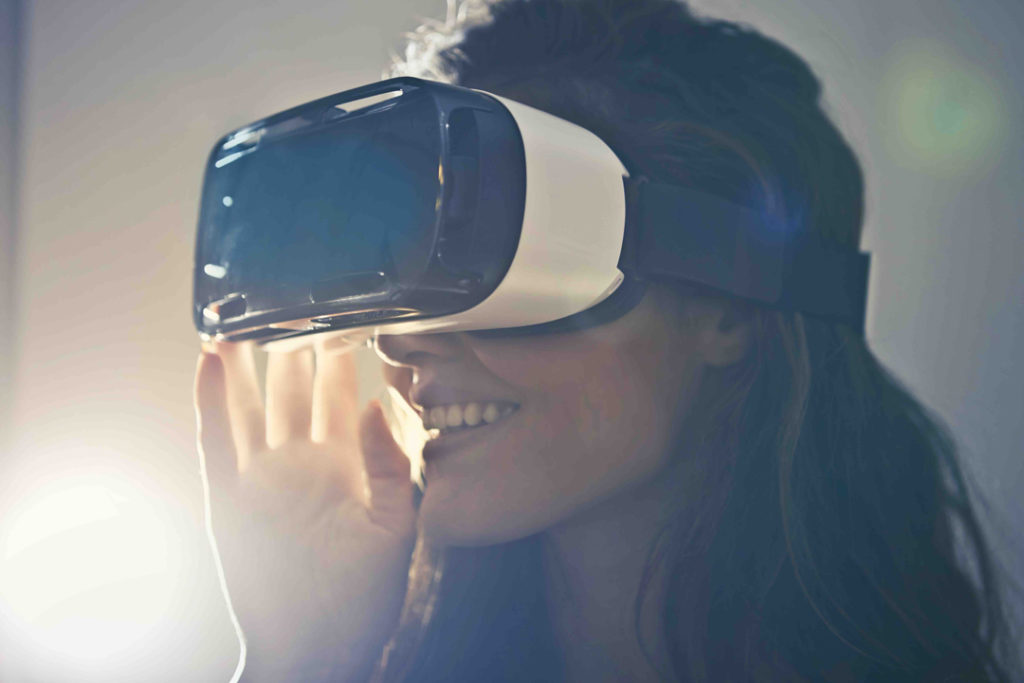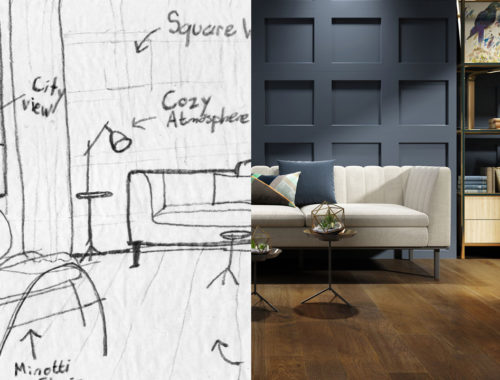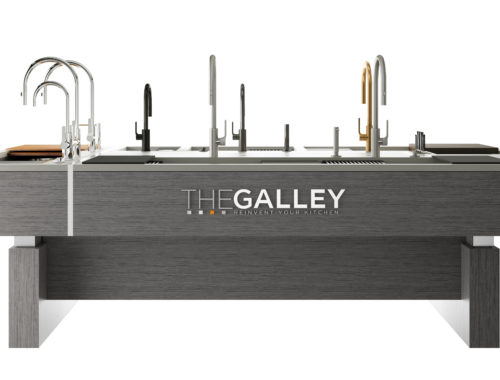Filed under: Introduction à la 3D, Making-of, Pourquoi la 3D .
In this somewhat technological article, we’ll help you gain a better understanding of the difference between ‘virtual reality’ and ‘augmented reality’.
Which reality is best adapted to your needs and market?
New technologies now play an increasingly important role when it comes to marketing manufactured products. Whether it’s to promote a new whirlpool tub, a faucet with integrated technology or contemporary flooring, there’s definitely no shortage of marketing tools out there to help you promote any type of product.
Of course, it’s easy to get lost in this maze of new technological innovations. But don’t worry, we’re here to guide you through them.
So, without further ado, let’s get right to the heart of the matter, starting with ‘virtual reality’.
What is ‘Virtual Reality’?
We’re convinced that, as a marketing director, there’s a very good chance you’re already familiar with the concept of virtual reality. The technology itself is not that new, as the term ‘virtual reality’ was actually coined back in the 1950s.
However, at the time it referred to a device that bore no resemblance whatsoever to the VR headsets we use today. This earlier version of the technology was more akin to a personalized cinema experience that was capable of stimulating a few of our senses. The device was equipped with fans and vibrating seats to create the perception of immersion.
The first virtual reality headsets as we know them today were only developed in the early 2000s and their technological capabilities have steadily continued to improve ever since. Virtual reality is now applied in a wide range of fields such as:
- Video games;
- The live broadcast or deferred transmission of shows;
- Education and training;
- The military sector;
- Product marketing and presentations.
For marketing teams at manufacturing companies working in such sectors as flooring and bathroom and kitchen products (bathtubs, kitchen and bathroom sinks and fittings, hardwood and vinyl flooring, and ceramics and so forth), virtual reality can prove to be a valuable asset and an indispensable add-on for marketing new products.
Just imagine being able to carry your entire range of products around on your cellular phone, having a virtual showroom at your fingertips and offering your clientele a comprehensive customer experience.
Virtual reality, as its name implies, is created entirely based on a universe that doesn’t actually exist in the real world, a world that appears to be real but in fact exists only in digital form.
In more concrete terms, it’s like you’re a spectator who’s stepped inside a 3D image or video. There are three different ways users can visualize the end results:
- The content can be viewed on a laptop or desktop computer and you can move around within the virtual environment using your mouse. This option is simple, doesn’t require any additional equipment and is available on the majority of newer computers. The only real drawback with this method is that it isn’t as immersive as using a headset.
- The second option is to access the content via a cellular phone. Instead of using the mouse, it’s your finger that enables you to move around inside the space. Phones are a lot faster and easier to use than a laptop if you’re in a public place, at a trade fair or any other location outside the office. The smaller screen however can be a significant disadvantage.
- The third and final option is without doubt the most appealing and that’s the VR headset. There are numerous models available on the market and it would take too long to describe all the technical characteristics here. Needless to say, headsets provide the ultimate full-on and totally immersive experience. When you cover your eyes with the headset, it’s as if you’re actually there in the room. You can literally wander around inside the space and feel, for example, that you’re relaxing in the bath or sitting comfortably in an armchair. And adding background music will further enhance the immersive experience.
In a nutshell, ‘virtual reality’ is a world that has been completely created from scratch and one in which users can interact to varying degrees.
What is ‘Augmented Reality’?
Augmented reality, as its name implies, is the addition of a virtual dynamic to the real world. This type of technology allows users to interact autonomously and with total freedom in a situation which is, however, real in every way.
Smart phones and tablets are the most suitable devices for using this kind of technology because they are equipped with a camera and it’s the camera that has the capacity to capture the image and then juxtapose all the different virtual elements contained in this image.
Here are just a few of the many ways this technology can be applied:
A flooring manufacturer has the possibility of simulating the integration of various types of flooring. Using a digital tablet or a smart phone, users and potential customers can visualize the flooring they are looking for and then validate its visual appearance in context.
They also have the option of integrating lighting fixtures, all styles of furnishings, a bathtub, and the list goes on. The possibilities are endless and there’s every chance we’ll be able to successfully integrate any one of your products.
Conclusion
At Kub Studio, innovation has been an integral part of our DNA since we opened our doors. State-of-the-art technology plays a fundamental role in our daily lives, whether we’re developing 3D virtual scenes or high-impact promotional videos, using virtual or augmented reality.
Kub Studio, where technology and expertise go hand in hand.
Kub Studio is a 3D design studio located in beautiful Quebec City. Our offices are in the very heart of the arts and technology hub in the St-Roch neighbourhood.
Filed under: Introduction à la 3D, Making-of, Pourquoi la 3D .
Read more
View all posts




